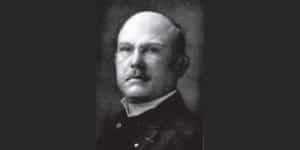Jeff Sutherland biography and books

Jeff Sutherland (Dr. Jeffrey Victor Sutherland, born June 20, 1941) is the creator and co-developer of Scrum, a framework for product management. Jeff Sutherland, along with Ken Schwaber, presented Scrum at OOPSLA 1995. He contributed to the creation of the Agile Manifesto in 2001 and co-authored The Scrum Guide, the official definition of the method, with Schwaber. Today, Jeff Sutherland is the principal consultant to Scrum Inc., based in Boston, Massachusetts.
Jeff Sutherland biography
Jeff is a graduate of the United States Military Academy. He worked for the United States Department of Defense for 11 years before becoming a physician at the University of Colorado School of Medicine. Here he became involved in work related to data collection and the development of advanced IT systems.
During his time in the US Air Force, Jeff was a Top Gun of his USAF RF-4C Aircraft Commander class. He flew 100 missions over North Vietnam.
Later, together with Yosi Amram, he developed and optimized the Sutherland NewsPage on Individual.com, one of the first news media on the worldwide web. At the time, the news portal used a so-called lexical parsing system.
In 1983, Sutherland joined a company that operated 150 banks across North America. Here he became VP Advanced Systems and General Manager of the ATM Business Unit. It was here that he first encountered business processes that were modeled on the waterfall method. He noticed that these were not working properly and implemented the first test version of Scrum@Scale.
In the years that followed, he fulfilled important roles as CEO and CTO of eleven different software companies.
Jeff is best known for his role in creating Scrum, a framework for business agility at scale. The method supports managers and employees at all levels of large organizations to enable change.
The entire Scrum framework was developed by Sutherland and his colleagues John Scumniotales and Jeff McKenna while working at Easel Corporation.
The method was based on a 1986 article by Hirotaka Takeuchi and Ikujiro Nonaka. That article, published by Harvard Business Review, includes best practices from a study by Dr. Dobb’s Journal.
Scrum includes 30-day cycles of planning, building and monitoring in so-called sprints. The name Scrum was chosen because the system includes a multifunctional team that comes together to make a priority list, a reference to the rugby scrummage.
Scrum became a resounding success and is used by a large number of organizations. Jeff Sutherland has proven with his method that teams can achieve large productivity increases compared to the average if they apply the method correctly and effectively. He also noted that Scrum teams show three differentiators from normal teams:
- Self-management
- Team membership continuity
- Dedication to a project
In addition, he argues that user needs should be central. If these are recorded as clearly as possible, this will reduce the chance of irregularities in the production process.
In 2006 Jeff Sutherland founded his own company Scrum Inc. and then worked as a Senior Advisor for OpenView Venture Partners. Scrum Inc. is now recognized as the premier source of Scrum training in the world. In his latest book ‘Scrum: The Art of Doing Twice the Work in Half the Time’, he describes how his background and expertise has been used to reshape today’s industry.
Famous quotes
- “The thing that cripples communication saturation is specialization—the number of roles and titles in a group. If people have a special title, they tend to do only things that seem a match for that title. And to protect the power of that role, they tend to hold on to specific knowledge.”
- “The Scrum Master, the person in charge of running the process, asks each team member three questions: 1. What did you do yesterday to help the team finish the Sprint? 2. What will you do today to help the team finish the Sprint? 3. What obstacles are getting in the team’s way? That’s it. That’s the whole meeting.”
- “The people who multitask the most just can’t focus.”
- “That absolute alignment of purpose and trust is something that creates greatness.”
- “people over processes; products that actually work over documenting what that product is supposed to do; collaborating with customers over negotiating with them; and responding to change over following a plan. Scrum is the framework I built to put those values into practice. There is no methodology.”
- “People aren’t happy because they’re successful. They’re successful because they’re happy.”
- “No Heroics. If you need a hero to get things done, you have a problem. Heroic effort should be viewed as a failure of planning.”
- “Never do betas. Never do work that you don’t think is good. You either give your customer something good, or you don’t. There is no ‘try’.”
- “Multitasking Makes You Stupid. Doing more than one thing at a time makes you slower and worse at both tasks. Don’t do it. If you think this doesn’t apply to you, you’re wrong—it does.”
- “Making people prioritize by value forces them to produce that 20 percent first. Often by the time they’re done, they realize they don’t really need the other 80 percent, or that what seemed important at the outset actually isn’t.”
- “If you can’t actually take time off without having to make sure everything is going right at the office, the thinking goes, you aren’t managing your teams well.”
- “I didn’t want to pick on him, but the fact is, in project after project, people cut and paste and throw in boilerplate, but no one actually reads all those thousands of pages.”
- “Greatness can’t be imposed; it has to come from within. But it does live within all of us.”
- “Embrace the unknown! That’s where learning lies! If you’re too afraid to learn, you will never get any better. This is the key to being successful at Scrum: embrace change.”
- “Blame Is Stupid. Don’t look for bad people; look for bad systems—ones that incentivize bad behavior and reward poor performance.”
- “At its root, Scrum is based on a simple idea: whenever you start a project, why not regularly check in, see if what you’re doing is heading in the right direction, and if it’s actually what people want? And question whether there are any ways to improve how you’re doing what you’re doing, any ways of doing it better and faster, and what might be keeping you from doing that.”
- “Agile Manifesto.” It declared the following values: people over processes; products that actually work over documenting what that product is supposed to do; collaborating with customers over negotiating with them; and responding to change over following a plan. Scrum is the framework I built to put those values into practice. There is no methodology.”
Famous Publications and books by Jeff Sutherland et al.
- 2019. A Scrum Book: The Spirit of the Game (1st ed.). Pragmatic Programmers. p. 572. ISBN 978-1118206669.
- 2018. “Agile at Scale”. Harvard Business Review. Retrieved 12 September 2020.
- 2016. “The Secret History of Agile Innovation”. Harvard Business Review.
- 2016. “Embracing Agile”. Harvard Business Review.
- 2014. Scrum: The Art of Doing Twice the Work in Half the Time (1st ed.). Currency. p. 256. ISBN 9780385346450.
- 2013. Scrum metrics for hyperproductive teams: how they fly like fighter aircraft. In 2013 46th hawaii international conference on system sciences (pp. 4870-4878). IEEE.
- 2012. Software in 30 Days: How Agile Managers Beat the Odds, Delight Their Customers, and Leave Competitors in the Dust (1st ed.). Wiley. p. 216. ISBN 978-1118206669.
- 2009. Shock therapy: A bootstrap for hyper-productive scrum. In 2009 Agile Conference (pp. 69-73). IEEE.
- 2009. Scrum and CMMI going from good to great. In 2009 Agile Conference (pp. 333-337). IEEE.
- 2007. The scrum papers. Nuts, Bolts and Origins of an Agile Process.
- 2007. Distributed scrum: Agile project management with outsourced development teams. In 2007 40th annual Hawaii international conference on system sciences (HICSS’07), pp. 274a-274a. IEEE, 2007.
- 2005. Future of scrum: Parallel pipelining of sprints in complex projects. In Agile Development Conference (ADC’05) (pp. 90-99). IEEE.
- 2004. Agile development: Lessons learned from the first scrum. Cutter Agile Project Management Advisory Service: Executive Update, 5(20), 1-4.
- 2002. Enterprise application integration and complex adaptive systems. Communications of the ACM, 45(10), 59-64.
- 2001. Inventing and Reinventing SCRUM in five Companies. Cutter IT journal, 14(21), 5-11.
- 1997. “Scrum Development Process”. OOPSLA Business Object Design and Implementation Workshop: 117–134. doi:10.1007/978-1-4471-0947-1_11. ISBN 978-3-540-76096-2. Retrieved 12 September 2020.
- 1995. Business object design and implementation workshop. In Addendum to the proceedings of the 10th annual conference on Object-oriented programming systems, languages, and applications (Addendum) (pp. 170-175).
How to cite this article:
Janse, B. (2022). Jeff Sutherland. Retrieved [insert date] from Toolshero: https://www.toolshero.com/toolsheroes/jeff-sutherland/
Original publication date: 08/30/2022 | Last update: 11/17/2023
Add a link to this page on your website:
<a href=”https://www.toolshero.com/toolsheroes/jeff-sutherland/”>Toolshero: Jeff Sutherland</a>










